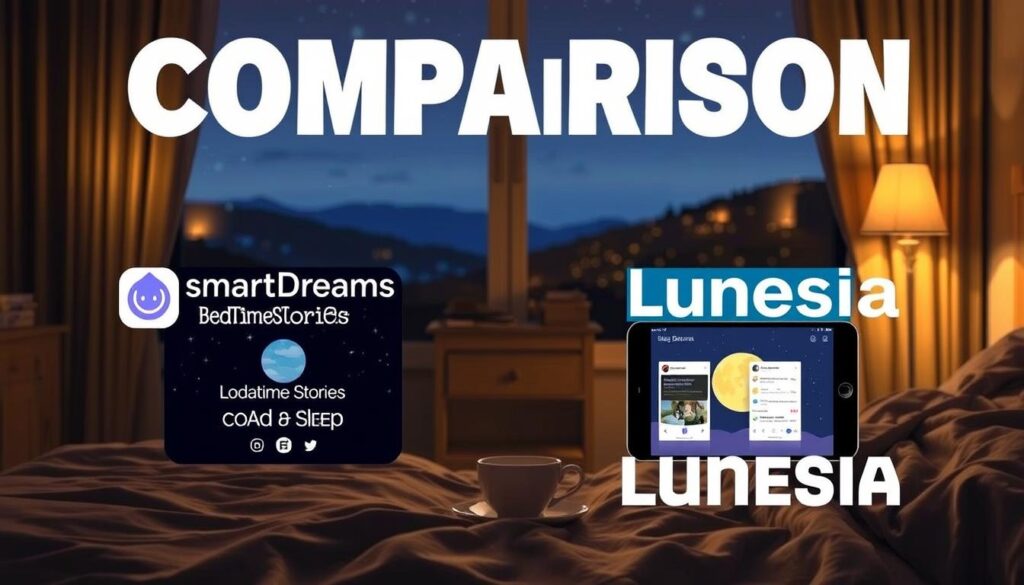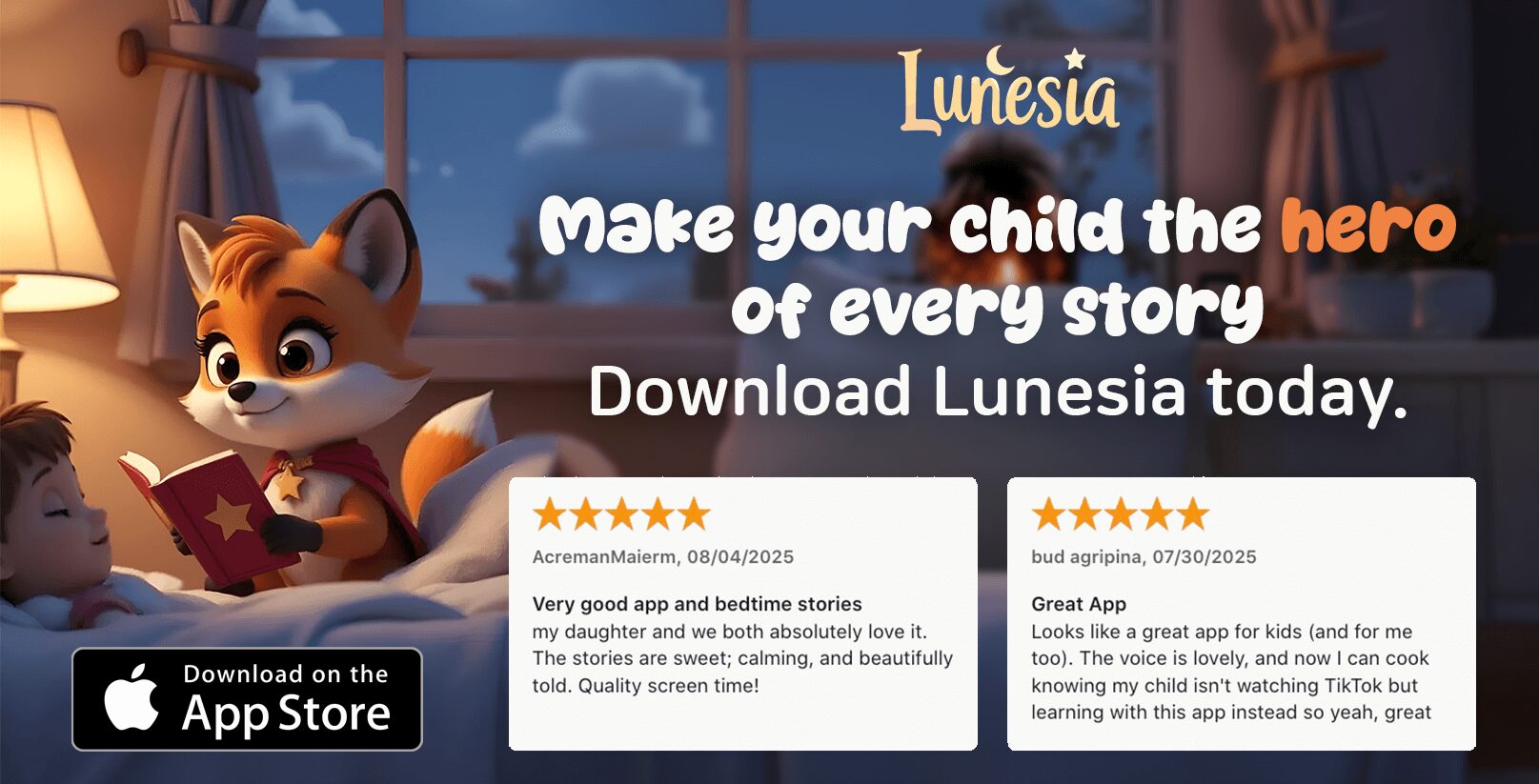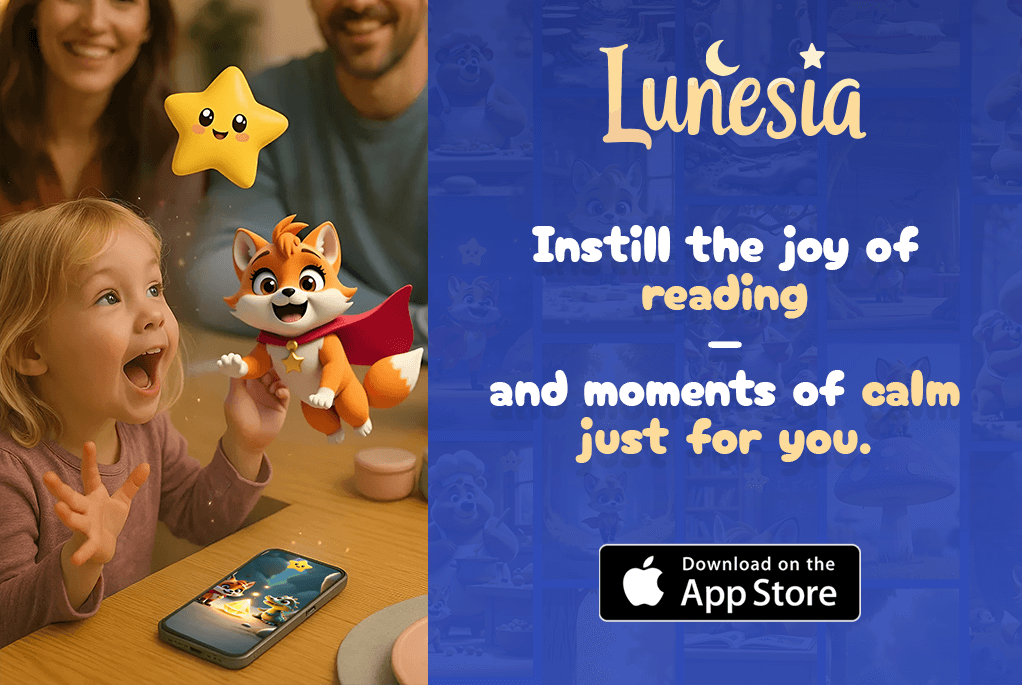Are you struggling to get a good night’s sleep? You’re not alone! In today’s fast-paced world, quality sleep is becoming a luxury. That’s where technology steps in with innovative solutions like sleep-enhancing apps. Two popular apps, SmartDreams and Lunesia, have gained attention for their unique approaches to improving sleep experience.
As someone who’s tested both apps, I’m excited to share my findings with you. The right app can make all the difference in your nightly routine. But which one is more effective? In this article, we’ll explore the strengths and weaknesses of each app to help you decide which one suits your needs best.
Understanding Sleep Aid Apps and Their Growing Popularity
As we navigate the challenges of modern life, sleep problems have become increasingly prevalent, affecting millions of Americans every night. This growing concern has led to a surge in the development and use of sleep aid apps, designed to help individuals improve the quality of their sleep.
The Rise of Digital Sleep Solutions
The way we approach sleep has undergone a significant transformation with the advent of digital sleep solutions. Traditional sleep aids have given way to more sophisticated, tech-driven approaches. Sleep aid apps have revolutionized the way we tackle sleep problems, offering a range of tools and techniques to enhance our nightly rest.
These apps utilize various technologies, including AI, sound monitoring, and movement tracking, to help users understand and improve their sleep patterns. From meditation and white noise to storytelling and comprehensive sleep tracking, the approaches taken by sleep apps are diverse and multifaceted.
How Technology is Addressing Sleep Problems
Technology has been instrumental in addressing sleep problems by providing personalized solutions through sleep aid apps. For instance, some apps allow users to set sleep goals and offer customized advice on achieving them. The personalization aspect has become a key feature in modern sleep apps, adapting to individual sleep patterns and preferences.
The COVID-19 pandemic has further accelerated the adoption of digital sleep solutions as stress and anxiety levels increased. Many users have found the technological approach more effective than traditional sleep aids, appreciating the unique experience these apps provide.
By incorporating scientific research to validate their approaches, sleep apps continue to evolve, offering a valuable tool for those struggling with sleep. As the popularity of these apps grows, so does their potential to make a significant impact on public health.
SmartDreams Bedtime Stories: Overview and Features
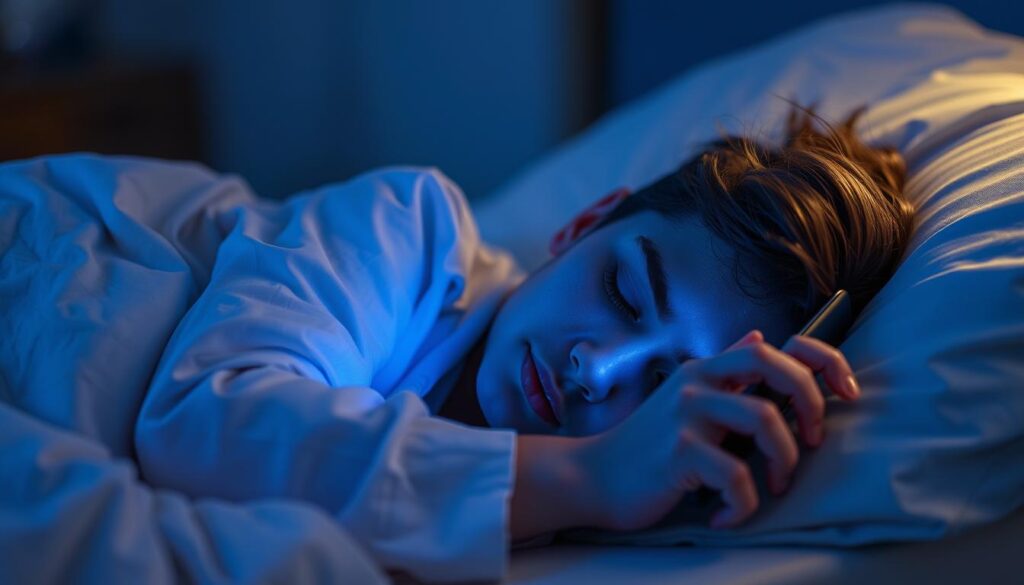
Imagine falling asleep to a new, personalized story every night, courtesy of SmartDreams. This innovative app is designed to help both children and adults drift off to sleep more easily by leveraging the power of artificial intelligence to create unique bedtime stories.
What is SmartDreams?
SmartDreams is an AI-powered bedtime story app that generates personalized stories tailored to your preferences and sleep needs. It’s not just another sleep story app; it’s a tool that learns and adapts to help you fall asleep more effectively every night. As Erin S., a satisfied user, puts it, “So innovative, yet so simple! This has become our go-to brand. Quality and concept are fantastic, and my twins absolutely love collecting the cards!”
Key Features of SmartDreams
The app boasts several features that make it stand out. Story customization allows you to tailor the narrative to your liking, while voice selection and background sound capabilities further enhance the sleep experience. You can save your favorite stories for repeated use, making it easy to find what works best for you. Whether you’re using it for yourself or your kid, SmartDreams creates a shared bedtime experience that can improve sleep for the whole family.
How SmartDreams Uses AI for Personalized Stories
At the heart of SmartDreams is its AI technology, which learns from your preferences over time to create increasingly effective sleep stories. By incorporating sleep science into its storytelling approach, the app uses narrative techniques known to promote relaxation and drowsiness. This means that every night, you can experience a new story that’s tailored to help you fall asleep, making it a valuable tool in your bedtime routine.
Lunesia (SleepScore): Overview and Features
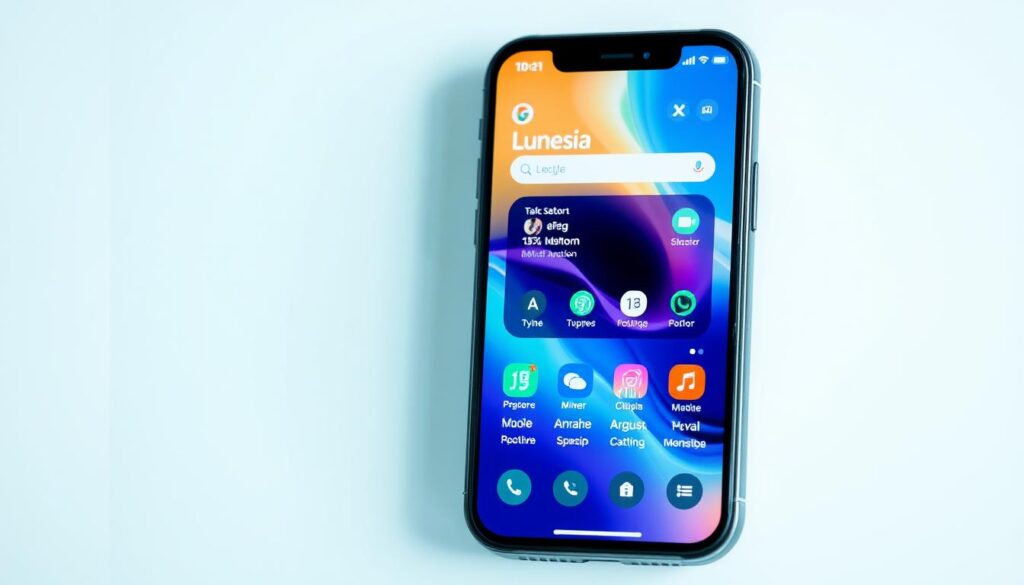
Sleep tracking just got smarter with Lunesia, an app that uses advanced sonar technology to monitor sleep without wearable devices. This innovative approach allows for a more natural and less intrusive sleep tracking experience.
What is Lunesia?
Lunesia, formerly known as SleepScore, is a comprehensive sleep tracking app that provides detailed insights into your sleep patterns. By utilizing your smartphone’s speakers and microphone, it detects movement and breathing patterns throughout the night, giving you a clear picture of your sleep quality.
Key Features of Lunesia
Lunesia boasts several key features that make it stand out. Its proprietary SleepScore system gives you a numerical rating of your sleep quality each night, making it easy to track your progress over time. The app breaks down your sleep into different phases (light, deep, REM) and tracks the time spent in each, providing unprecedented insight into your sleep architecture. Additionally, Lunesia offers actionable recommendations based on your sleep data, helping you improve specific aspects of your sleep. The smart alarm feature wakes you during lighter sleep phases, reducing morning grogginess and helping you feel more refreshed.
The Science Behind Lunesia’s Sleep Tracking
The technology behind Lunesia is the result of more than 12 years of scientific research, ensuring a high level of precision and effectiveness. By analyzing your sleep duration, the time it took to fall asleep, and the different phases of sleep, Lunesia provides a comprehensive analysis of your sleep patterns. This data is then used to offer personalized advice to improve your sleep quality over time.
With its user-friendly interface and detailed sleep analysis, Lunesia has become a valuable tool for anyone looking to understand and improve their sleep. By leveraging advanced sonar technology and years of research, Lunesia offers a unique sleep tracking experience that can be tailored to your individual needs.
User Experience Comparison: SmartDreams vs Lunesia sleep
When it comes to sleep aid apps, the user experience can make or break the effectiveness of the product. As we explore the user experience of SmartDreams and Lunesia, two popular sleep apps, we’ll examine their interfaces, setup processes, and customer support.
Interface and Ease of Use
The user interface is a critical aspect of any app. Lunesia offers a data-driven dashboard that provides users with detailed insights into their sleep patterns. In contrast, SmartDreams presents a more narrative-focused experience, guiding users through bedtime stories tailored to their preferences. While Lunesia’s interface may appeal to tech-savvy users, SmartDreams’ simplicity makes it accessible to a broader audience.
Here are some key differences in their interfaces:
- Lunesia: Data visualizations and sleep insights
- SmartDreams: Story recommendations and sleep progress
- Ease of navigation: Both apps are relatively easy to navigate, but Lunesia’s features may require more adjustment
Setup Process and Daily Usage
The setup process for both apps differs significantly. Lunesia requires users to position their phone and answer lifestyle questions, whereas SmartDreams focuses on story preferences and sleep goals. Lunesia’s setup is efficient and user-friendly, with a straightforward startup process that doesn’t require watching instructional videos.
Some key aspects of their setup processes include:
- Lunesia: Positioning phone, answering lifestyle questions, and automatic tracking
- SmartDreams: Setting story preferences and sleep goals
Customer Support and Resources
Both apps offer customer support, but the quality and availability of resources vary. SmartDreams provides a comprehensive knowledge base and responsive customer support, while Lunesia offers detailed sleep insights and analysis. When it comes to troubleshooting, SmartDreams’ support team is more readily available.
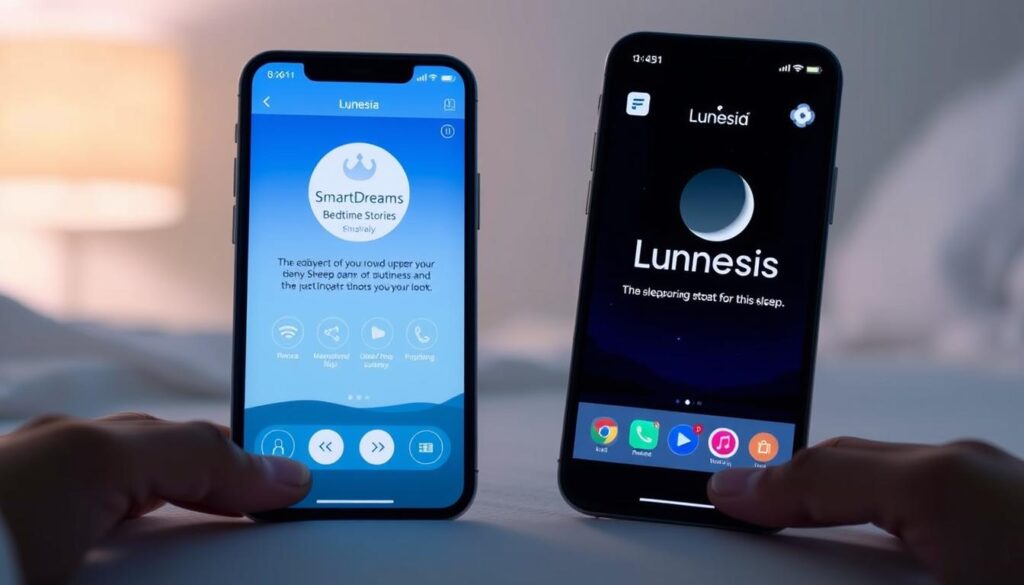
In conclusion, both SmartDreams and Lunesia offer unique user experiences that cater to different needs and preferences. By understanding the strengths and weaknesses of each app, users can make informed decisions about which one is best for them.
Effectiveness for Sleep Improvement
When it comes to enhancing sleep, the effectiveness of sleep aid apps like SmartDreams and Lunesia is worth exploring. Both apps have garnered attention for their unique approaches to improving sleep quality, but how do they actually perform?
How SmartDreams Affects Sleep Quality
SmartDreams uses a storytelling approach to help users fall asleep. By providing personalized bedtime stories, the app aims to calm the mind and ease the transition to sleep through cognitive distraction and guided imagery. This method can be particularly effective for individuals who struggle with racing thoughts at bedtime. Users have reported improvements in falling asleep faster and experiencing a more restful night’s sleep when using the app consistently every night.
How Lunesia Affects Sleep Quality
Lunesia, on the other hand, employs a data-driven approach to improve sleep quality. By tracking sleep patterns with precision, the app helps users identify patterns and make informed lifestyle changes. Lunesia’s sleep tracking can reveal issues that users might not be aware of, such as frequent night awakenings or insufficient deep sleep. By using Lunesia every night, users can gain valuable insights into their sleep and make adjustments to enhance their overall sleep quality and experience.
Scientific Backing and Research
Both SmartDreams and Lunesia have a foundation in scientific research. Lunesia’s technology, for instance, is the result of more than 12 years of scientific research, and its methods are validated by scientific articles available on their website, as recommended by the American Academy of Sleep Medicine. The effectiveness of these apps is further underscored by user experience and the precision of their tracking and storytelling capabilities. When choosing a sleep aid app, it’s reassuring to know that the technology behind them is backed by research and designed to provide a better sleep experience through consistent use of the app.
In conclusion, both SmartDreams and Lunesia show promise in improving sleep quality through their respective approaches. While SmartDreams focuses on the calming effects of personalized stories, Lunesia provides valuable insights through precise sleep tracking. The key to their effectiveness lies in consistent use and the ability to address different types of sleep problems. As sleep aid apps continue to evolve, it’s clear that technology plays a significant role in enhancing our sleep experience.
Pricing and Subscription Models
To help you make an informed decision, we’ll explore the pricing structures of SmartDreams and Lunesia. When choosing a sleep aid app, understanding the costs involved is crucial to ensure you’re getting the best value for your money.
SmartDreams Pricing Structure
SmartDreams offers a free trial period, allowing you to test its features before committing to a subscription. The app is available on a monthly or annual basis, with discounts offered for longer subscription commitments. Here are the key points to consider:
- Free trial available
- Monthly subscription: $X
- Annual subscription: $Y (with a discount)
By offering a free trial, SmartDreams lets you experience its AI-driven personalized bedtime stories every night, helping you decide if it’s the right tool for improving your sleep quality.
Lunesia Pricing Structure
Lunesia, also known as SleepScore, has a different pricing model. It offers both a free version and a premium subscription. The premium version costs $50 per year or $6 per month. Here are the main differences:
- Free version: Limited features, showing only the past seven days of sleep data
- Premium version: Customized advice, personal trend records, and more detailed sleep tracking
For users who rely on the app every night, the premium version is worth considering due to its enhanced features and personalized insights.
Value for Money Analysis
When comparing the value for money, it’s essential to consider what features are available in both the free and premium versions of each app. While both SmartDreams and Lunesia offer unique benefits, their pricing models cater to different user needs. For instance, if you use the app every night, the cost per night can be relatively low, especially with annual subscriptions.
Here’s a comparison of the key aspects:
| Feature | SmartDreams | Lunesia |
|---|---|---|
| Free Trial | Available | Not specified |
| Monthly Cost | $X | $6 |
| Annual Cost | $Y | $50 |
Ultimately, the choice between SmartDreams and Lunesia depends on your specific sleep needs and budget. By evaluating the pricing structures and features, you can decide which app is the better tool for enhancing your sleep quality.
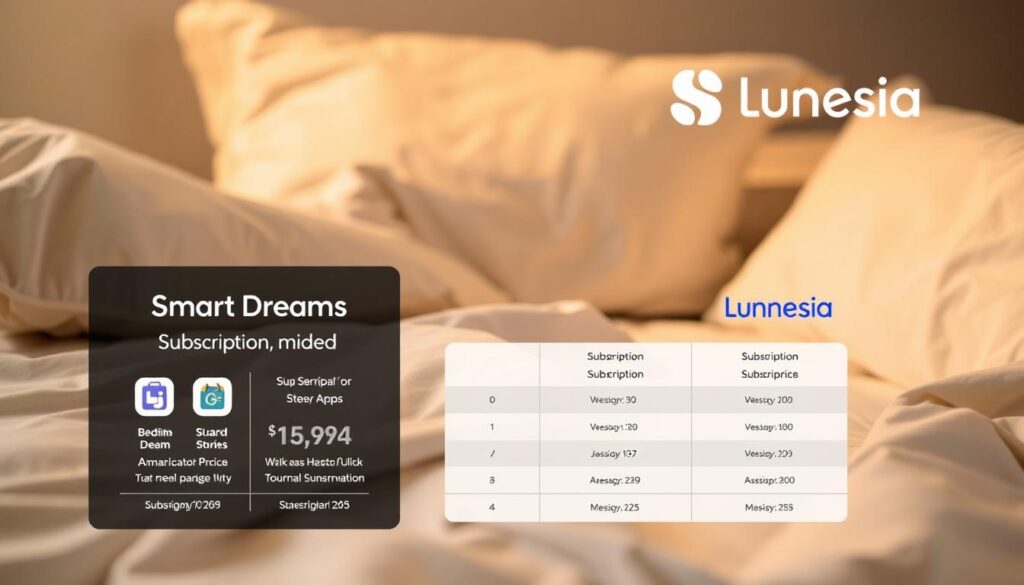
Compatibility and Technical Requirements
When choosing a sleep aid app, it’s crucial to consider the technical requirements and compatibility to ensure a seamless experience. Both SmartDreams and Lunesia have specific requirements that can affect how well they work for you.
Device Compatibility for SmartDreams
SmartDreams is designed to be compatible with a wide range of devices. It works on both iOS and Android platforms, making it accessible to most smartphone users. For iOS devices, it requires iOS 10 or later, while for Android, it needs Android 5.0 or later. This broad compatibility ensures that you can use SmartDreams regardless of whether you have a newer or older device, though very old devices might not be supported.
Device Compatibility for Lunesia
Lunesia, on the other hand, has more specific device requirements due to its reliance on advanced sonar technology that utilizes the device’s speaker and microphone. As of February 2021, it works with iPhone 6 or higher (with iOS 10.3.3 or higher) and specific Android models like Samsung Galaxy S7 and later, as well as Google Pixel 2 XL. This specificity is due to the need for precise hardware capabilities to accurately track sleep patterns.
Technical Limitations to Consider
While both apps are designed to be user-friendly, there are technical limitations to consider. For Lunesia, the positioning of your phone is crucial for its sonar technology to work effectively. Additionally, battery consumption is a concern, especially for Lunesia, as it needs to run throughout the night. Storage requirements are also a factor, with both apps requiring some space for installation and offline content. Ensuring your device meets these requirements will enhance your overall experience with the app.
“The right device compatibility can make all the difference in your sleep experience,” as it directly impacts how effectively the app can track and improve your sleep.
User Reviews and Testimonials
Real users, real experiences – that’s what we’ll be focusing on as we review SmartDreams and Lunesia. User reviews provide valuable insights into how these apps perform in real-life scenarios, helping us understand their effectiveness in improving sleep quality.
What Users Say About SmartDreams
SmartDreams has garnered praise for its innovative approach to bedtime stories. Users appreciate how the app engages kids and helps them wind down at bedtime. One user, Erin S., raved about the app, saying, “So innovative, yet so simple! This has become our go-to brand. Quality and concept are fantastic. AND my twins absolutely love collecting the cards! Thank you, Smart Dreams!” Such testimonials highlight the app’s ability to make bedtime a positive experience for children. Parents have also noted improvements in their kids’ sleep patterns when using the app every night.
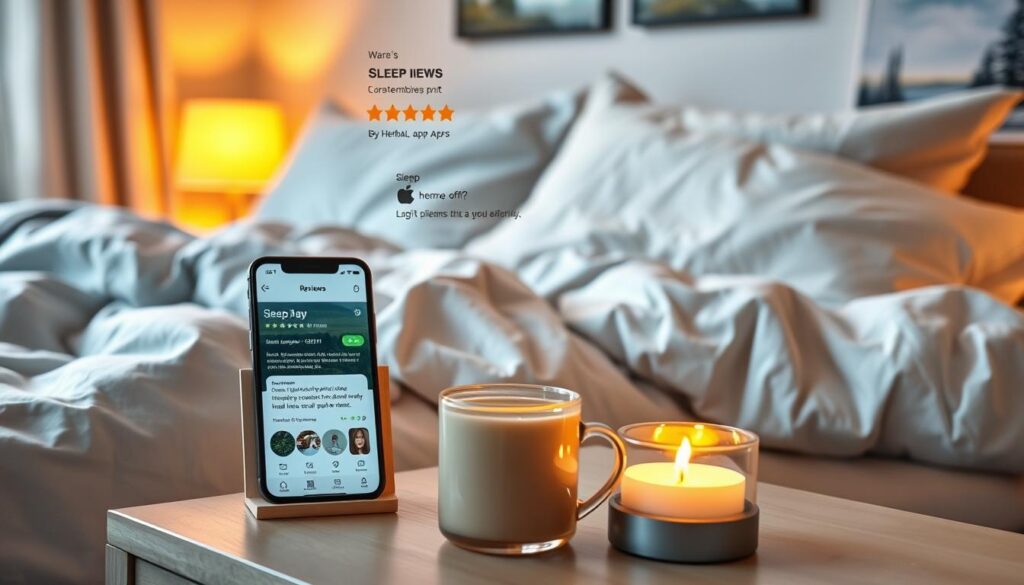
What Users Say About Lunesia
Lunesia users appreciate the app’s ability to track sleep patterns accurately and provide actionable insights. Many have reported improved sleep quality when using the app consistently every night. Users praise Lunesia for its user-friendly interface and the detailed experience it offers. While some users have noted limitations, the overall sentiment is positive, with many considering it a valuable tool in their sleep improvement journey. As with any app, user reviews highlight the importance of consistent use for optimal results.
Both SmartDreams and Lunesia have received positive reviews from users, with many appreciating their unique approaches to addressing sleep issues. Whether it’s helping kids sleep through the night or improving adult sleep quality, these apps have made a significant impact on users’ lives.
Best Use Cases: Who Should Choose Each App
The choice between SmartDreams and Lunesia isn’t just about picking a sleep aid; it’s about selecting the right tool to address your unique sleep challenges. Both apps offer distinct benefits, making them suitable for different types of users and sleep goals.
Ideal Users for SmartDreams
SmartDreams is perfect for individuals who struggle with racing thoughts at bedtime, as its storytelling feature serves as a cognitive distraction, helping to calm the mind. It’s also an excellent choice for parents seeking to improve their children’s sleep quality through engaging bedtime stories. Creative and imaginative individuals will appreciate the personalized narratives that SmartDreams offers, making it easier to fall asleep every night.
Ideal Users for Lunesia
Lunesia, on the other hand, is geared towards those who desire precision in tracking their sleep patterns and gaining data-driven insights. Individuals with suspected sleep disorders will benefit from Lunesia’s ability to monitor sleep over extended periods. Analytical and data-oriented users will appreciate the detailed information Lunesia provides, helping them understand their sleep quality and make informed decisions to improve it.
Using Both Apps Together
For some users, combining both apps could be the key to achieving better sleep. Using SmartDreams to help fall asleep and Lunesia to track the resulting sleep quality can provide a comprehensive approach to sleep improvement. This combination allows users to benefit from the storytelling feature of SmartDreams while leveraging Lunesia’s precision tracking capabilities. By integrating both apps into their sleep routine, users can enjoy a restful night’s sleep and wake up feeling refreshed every morning.
| Feature | SmartDreams | Lunesia |
|---|---|---|
| Primary Function | Storytelling for sleep | Sleep tracking and insights |
| Ideal User | Those who struggle with racing thoughts, parents of children with sleep issues | Individuals with suspected sleep disorders, data-driven users |
| Key Benefit | Personalized bedtime stories for relaxation | Precision sleep tracking and recommendations |
Conclusion: Making Your Choice for Better Sleep
As we explore the features and benefits of SmartDreams and Lunesia, it becomes clear that the right choice depends on your individual sleep needs and preferences. When deciding between these twosleep improvement apps, consider what matters most to you: personalized bedtime stories or advanced sleep tracking.
Yoursleep experienceis unique, and what works for one person may not work for another. If you’re drawn to storytelling, SmartDreams might be the better choice. For those who prefer data-driven insights, Lunesia could be the way to go.
Before making a decision, take advantage offree trialsor basic versions to gauge whichappresonates with you. Remember,consistencyis key, as sleep improvements typically require regular use over several weeks or months.
Ultimately, the journey to better sleep is a personal one. By considering your specific sleep goals and challenges, you can make an informed decision. Don’t forget that good sleep hygiene is essential, regardless of whichappyou choose. With the right tool and a bit of patience, you can wake up feeling refreshed and ready to take on the day, every day, foryearsto come.
FAQ
How do I get started with a bedtime story app for my kid?
To get started, simply download the app, create an account, and begin exploring the available stories. Most apps, like those for bedtime, offer a free trial or introductory content to help you get familiar with their features and ease of use.
Are these apps suitable for kids with night fears or anxiety?
Yes, many bedtime story apps are designed to help kids relax and fall asleep more easily, including those with night fears or anxiety. They often feature calming stories and soothing soundscapes tailored to ease their worries and promote a restful night’s rest.
Can I customize the bedtime experience for my child?
Absolutely! Most bedtime apps allow you to personalize the experience for your child. You can often choose from various story themes, adjust the narration speed, and even include your child’s name in the stories to make them more engaging and comforting.
How do these apps track or improve the quality of my kid’s night rest?
Some apps use advanced technology to monitor and analyze rest patterns, providing insights into duration and quality. Others focus on creating a relaxing bedtime routine through stories and sounds, helping to signal to your child that it’s time for a restful night.
Are there any precision sleep tracking features available in these apps?
Yes, certain apps offer precise tracking features that monitor rest patterns, providing detailed insights into the quality and duration of your kid’s rest. This can be particularly useful for understanding their rest habits and identifying areas for improvement.
Can I use these apps every night, and are they designed for regular use?
Yes, these apps are designed for regular, nightly use. They can become a comforting part of your child’s bedtime routine, helping to establish healthy rest habits and a consistent nightly ritual.
What kind of support do these apps offer for parents seeking guidance?
Many apps offer resources and support for parents, including tips on creating a bedtime routine, managing night fears, and promoting healthy rest habits. Some may also offer customer support for any questions or concerns you might have about using the app.
